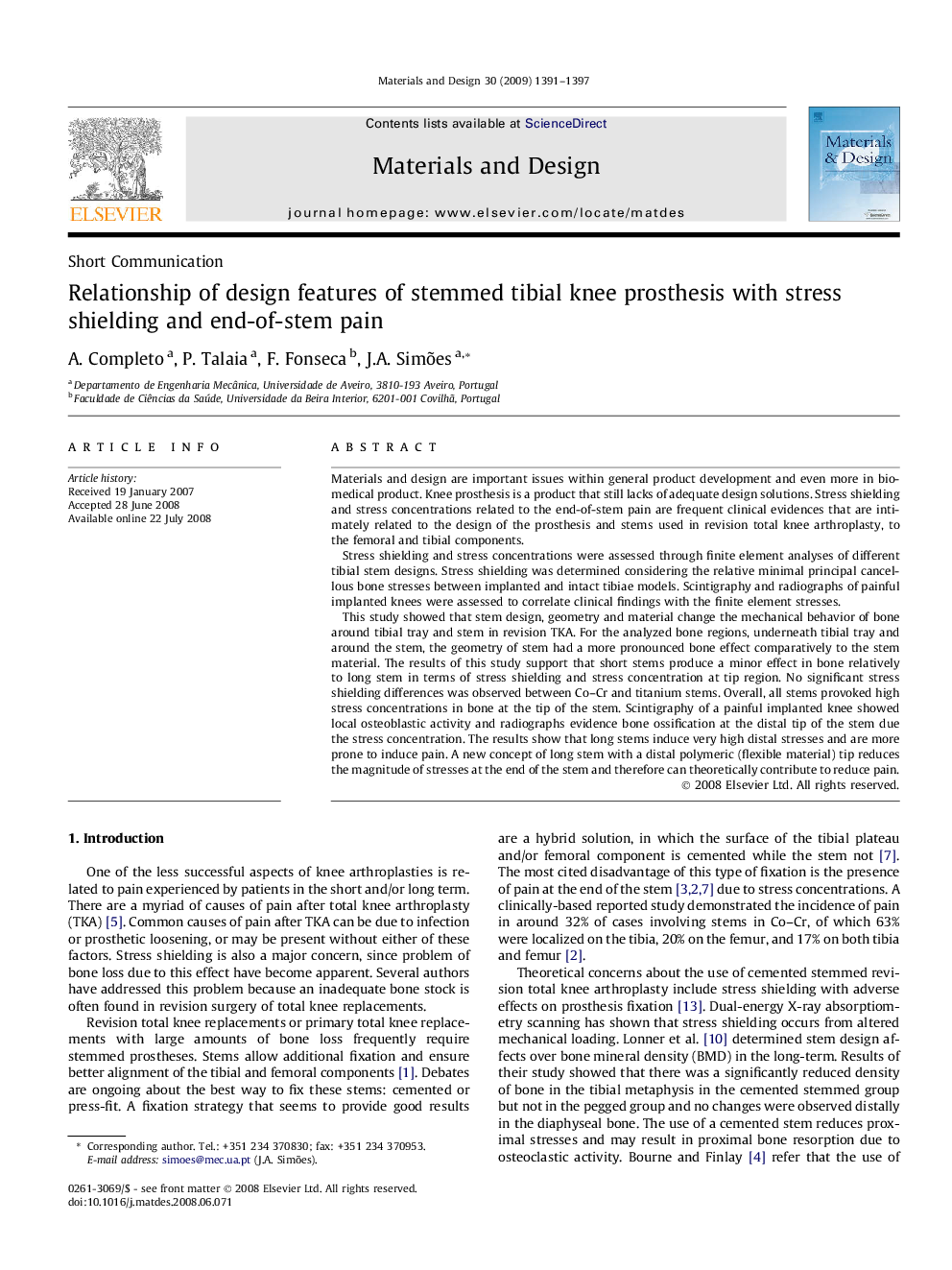| Article ID | Journal | Published Year | Pages | File Type |
|---|---|---|---|---|
| 833060 | Materials & Design (1980-2015) | 2009 | 7 Pages |
Materials and design are important issues within general product development and even more in biomedical product. Knee prosthesis is a product that still lacks of adequate design solutions. Stress shielding and stress concentrations related to the end-of-stem pain are frequent clinical evidences that are intimately related to the design of the prosthesis and stems used in revision total knee arthroplasty, to the femoral and tibial components.Stress shielding and stress concentrations were assessed through finite element analyses of different tibial stem designs. Stress shielding was determined considering the relative minimal principal cancellous bone stresses between implanted and intact tibiae models. Scintigraphy and radiographs of painful implanted knees were assessed to correlate clinical findings with the finite element stresses.This study showed that stem design, geometry and material change the mechanical behavior of bone around tibial tray and stem in revision TKA. For the analyzed bone regions, underneath tibial tray and around the stem, the geometry of stem had a more pronounced bone effect comparatively to the stem material. The results of this study support that short stems produce a minor effect in bone relatively to long stem in terms of stress shielding and stress concentration at tip region. No significant stress shielding differences was observed between Co–Cr and titanium stems. Overall, all stems provoked high stress concentrations in bone at the tip of the stem. Scintigraphy of a painful implanted knee showed local osteoblastic activity and radiographs evidence bone ossification at the distal tip of the stem due the stress concentration. The results show that long stems induce very high distal stresses and are more prone to induce pain. A new concept of long stem with a distal polymeric (flexible material) tip reduces the magnitude of stresses at the end of the stem and therefore can theoretically contribute to reduce pain.
